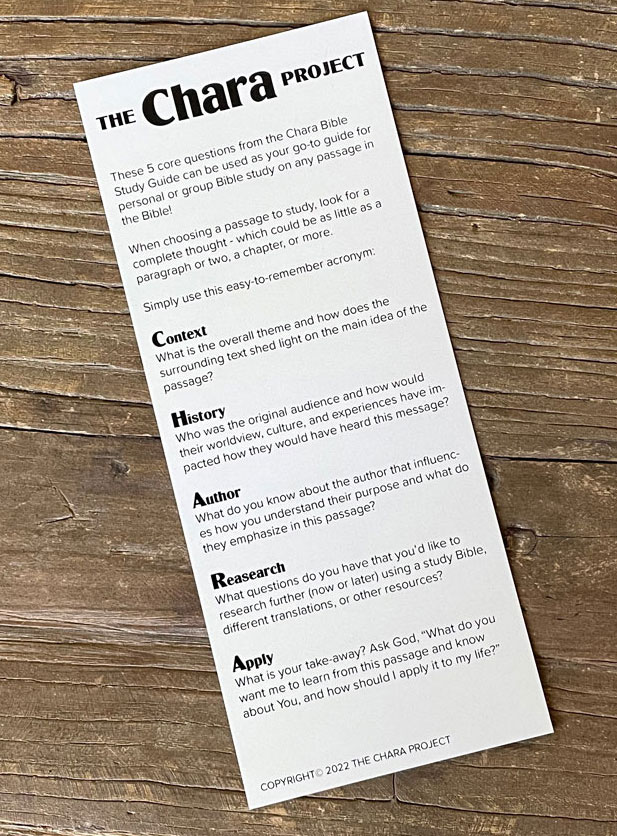If you’re at all familiar with the gospels (Matthew, Mark, Luke and John), which record the life, teachings, death and resurrection of Jesus, you can likely guess where our story picks up in Luke 24 – the last chapter of Luke’s gospel account. Nonetheless let’s go ahead and orient ourselves with where we’re at in the life of Jesus and meet the people we’ll walk alongside on their journey.
1. HISTORY – When did the events take place? What was going on in history at that time?
“Now that same day” (Luke 24:13)
What day?
Right away we know that we’re missing some information. And the best way to discover what that is is to read the immediate context – what came right before this? Since the story of the Emmaus disciples begins in the middle of chapter 24, it would make sense to at least go back and read from the beginning of the chapter. But when you do, you’ll realize that you need to go back even further to grasp what is going on.
Read as much context leading up to our story as you’d like, but at the very least read:
Luke 22:1-2, 23:32-33, 23:46. What was going on at the time?
Luke 23:54-24, 1. When did these events take place?
Luke 24:1-12. What had taken place early in the morning on the same day our story picks up?
It had been Passover week, where Jews from all over traveled to Jerusalem to celebrate (Luke 22). It was during this time that Jesus suffered a brutal death between two criminals as He was crucified on a cross. His crucifixion took place on Friday, which was known as ”preparation day” (Luke 24:54) when Jews would prepare for the Sabbath, a day of rest that took place every Saturday (Luke 23:56). The Sabbath had prevented a group of women among Jesus’ followers from preparing Jesus’ body for burial, so they went on the third day after Jesus was crucified. It was Sunday, the first day of the week–resurrection morning. Jesus had risen from the dead!
It’s also worth noting that the people that had been visiting Jerusalem for the Passover were likely heading home after Sabbath. At least that’s the situation we find our two main characters in.
2. HISTORY – Who was it written about? How does the Bible describe them?
Who are the two people we find walking from Jerusalem to the village of Emmaus in Luke 24:13? Once again, we need more context. Check out:
Luke 24:9-10. What can you learn about these two people? Who were they associated with?
Luke 24:13-18. How does the text describe them?
Now that we know WHEN this interaction took place and WHO it’s about, we may start to wonder WHY – why did Jesus appear to these two disciples on such a significant day?
3. HISTORY – Why was this message given to those people at that time?
From what we can gather in the four gospels, on the day Jesus rose from the dead He appeared to some of His closest disciples, including Mary Magdalene and several other women, as well as Peter and most of Jesus’ 11 disciples (John 20:11-25, Matthew 28:1-10, Luke 24:34).
One of the other detailed accounts of an encounter with the risen Lord on resurrection Sunday is with Mary Magdalene.
Read John 20:11-18. What similarities do you see in the way Mary is described and the two Emmaus disciples? Why do you think Jesus appeared to them on this day?
Emotions were high. Jesus’ followers were grieving His death. Earlier that morning there were reports that the tomb was empty and that Jesus had risen and now these two disciples were heading home trying to make sense of it.
4. APPLY – Ask: What do you learn about God – His character, attributes, or desires?
It’s remarkable that Luke is the only gospel writer that tells the story of these two Emmaus disciples (minus a brief mention in Mark 16:12). One is named Cleopas, perhaps he was the husband of one of the women who had been with Jesus when He died on the cross (John 19:25), and the other is unnamed. Because we know nothing else about these two unknown disciples other than what we read here in Luke’s gospel we might think they did not play a significant role in Jesus’ ministry. Yet, on this historic day, the very day He arose from the dead, Jesus appeared to these two disciples.
What does this tell you about Jesus? How does this apply to you?
5. HISTORY – What worldview, cultural, religious, political factors and experiences were a part of their world and how did that influence them?
On a seven mile walk there would be plenty of time for conversation and that’s exactly what we find these two doing – processing all that had taken place over the past couple days. It would not have been uncommon for strangers, especially fellow Jews, who were traveling home after the Passover to walk together and talk along the way.
How does Jesus approach and interact with the two disciples in Luke 24:15-17?


